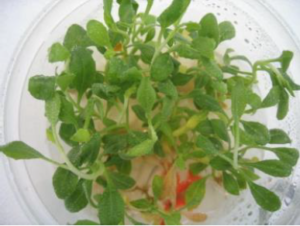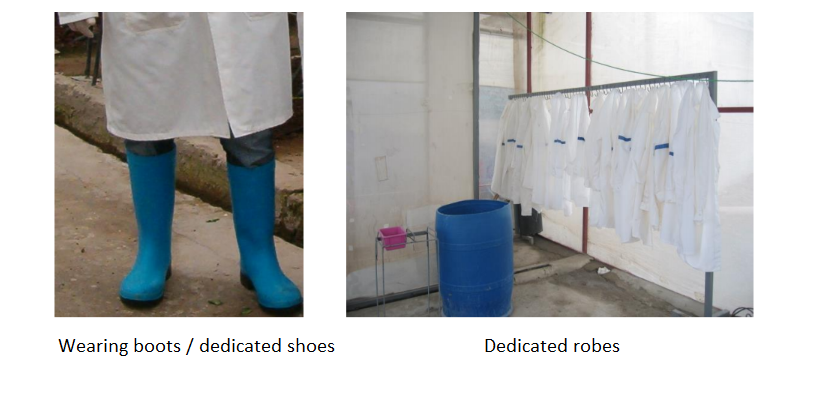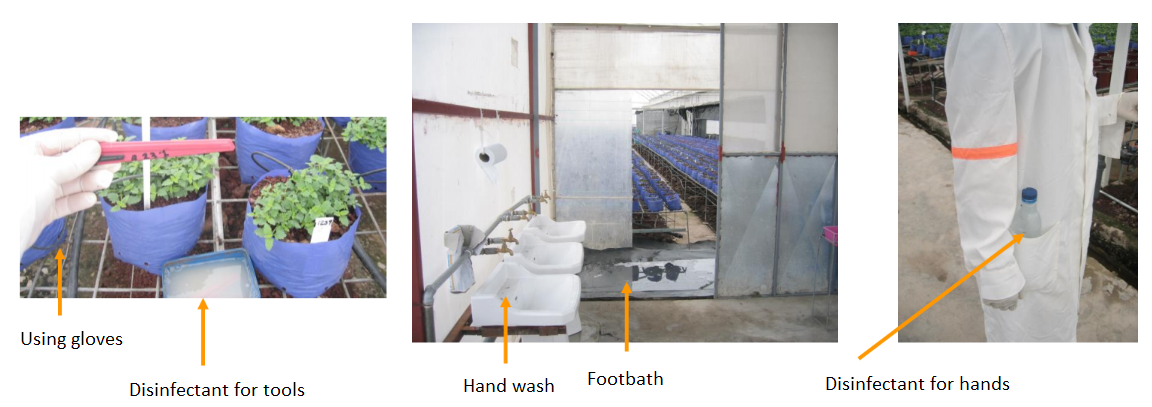Sanitation in the greenhouse
Sanitation is one of the most important practices to reduce or avoid plant diseases in greenhouses.
Pathogens, such as fungi, bacteria and viruses can survive well in the environment, including in crop residues, soil, tools, clothes, workers’ hands etc.
Proper sanitation practices can reduce pesticide use, costs and prevent yield losses.
Exclusion techniques
In greenhouses, sanitation involves both exclusion and protection techniques, where exclusion is the first line of defense against plant diseases.
Exclusion techniques include:
- Using a disease-free growing media
- Water disinfection
- Sanitation at greenhouse entrance
- Using clean plant material
Sterilizing the growing media
The growing medium might introduce and spread plant pathogens. Reusing the growing medium significantly increases the risk of spreading plant pathogens.
Most common sterilization methods include steam sterilization and chemical fumigation. In the past, methyl bromide and Vapam were used. However, methyl bromide is now banned in most countries. Other chemicals, such as Metam sodium, are used instead.
Growing media sterilization with steam (left) and with Metam sodium (right)
Target temperatures and sterilization time, to kill plant pathogens in a moist growing media
| Pest/disease | Steam temperature (°C) | Duration (min.) |
| Pythium, Phytophthora | 46 | 40 |
| Sclerotinia | 50 | 5 |
| Rhizoctonia | 52 | 30 |
| Botrytis | 55 | 15 |
| Fusarium | 57 | 30 |
| Most bacteria | 71 | 30 |
| Insects and mites | 70 | 20 |
| Most weeds | 80 | 15 |
| Nematodes | 55 | 15 |
| Viruses | 100 | 30 |
Disinfecting the irrigation water
The irrigation water may require disinfection. For example:
- When using surface water
- In production systems where water is recirculated, such as NFT (Nutrient film technique) systems
- When reusing drainage water etc.
Disinfection methods include:
- Chlorination
- Chlorine dioxide
- UV disinfection
- Ozone
- Other, less common methods – Iodine, mixed oxidants, chloramines, slow sand filtration
Using clean plant material
Starting clean is key to avoiding plant diseases and pests. Whether the initial plant material is seedlings, seeds or cutting, it is important to make sure that the material is clean. This may include lab tests for plant viruses and careful inspection of new plants received.
Sanitation at the greenhouse entrance
Depending on the crop and the pathogens that we want to avoid, different sanitary measures can be taken at the greenhouse entrance.
An entrance room attached to the greenhouse structure is essential in order to keep proper sanitation.
The entrance room should have a double-door system with a vent to avoid penetration of pests to the greenhouse.
Effective sanitation requires additional measures:
- Keep dedicated clothing in the entrance room. This includes clothing such as robes, sterile coveralls, disposable gloves, shoe coverings or dedicated shoes. Workers must wear the protective clothing before entering the production area.
- Installing footbath / disinfection mats at the greenhouse entrance – Footbath must contain a disinfectant. Workers and visitors must step through the footbath. Footbath must be emptied and cleaned at least every 1-3 days.
- Hand washing and disinfection
Sanitation inside the greenhouse
The following sanitary measures can prevent or minimize pest and disease contamination.
Using clean tools, containers and other equipment
Some plant pathogens can easily carried from plant to plant on tools. Therefore, tools, such as pruners and cutting knives must be cleaned and disinfected frequently. Furthermore, in sensitive crops, hand tools must be disinfected after being used on each bench or each plant variety.
Plant containers must be thoroughly cleaned and disinfected before reusing them.
In general, every equipment that comes from outside the greenhouse must be cleaned, as it might introduce pests and diseases.
Removing weeds and crop residues
Removing plant debris is essential for reducing plant disease and pest risk. Crop residues that are left in the field serve as alternate hosts for pests and many pests and plant pathogens can overwinter in crop residues.
Weeds are also a perfect host for many pests. Therefore, they can act as ‘in-between’ hosts for pathogens that might infect successive crop. For example, weeds like Stellaria media, Leucanthemum vulgare, Convolvulus, Arctium and many other weeds, are alternative hosts of TSWV.
Destroying the alternative hosts and their debris reduces their inoculum for the next crop.
Greenhouse floor and benches
It is recommended to cover any exposed soil in the greenhouse. Concrete, gravel or plastic covers can be used.
Floor must be cleaned frequently, and soil residues must be removed.
Raised benches prevent plants from touching the greenhouse floor and minimize contamination due to water splashes. It is highly recommended to clean and disinfect benches between crop cycles.
Common disinfectants and their use
For hands:
Soap – rinses bacteria, viruses off hands. Does not kill the pathogens.
Alcohol – Isopropanol 70%, Ethanol 70% – kill bacteria and fungi.
Mennoflorades 1% (benzoic acid) – kills bacteria, fungi and viruses.
Physan 20 – bacteria, fungi, viruses.
For the footbath:
TSP (Tri Sodium Phosphate) 10% – Viruses only.
Menoflorades 3% – Bacteria, fungi, viruses.
Physan 20 – Bacteria, fungi, viruses.
Chlorine – bacteria, fungi, viruses.
For tools
Alcohol – Isopropanol 70%, Ethanol 70% – kill bacteria and fungi.
Mennoflorades 1% (benzoic acid) – kills bacteria, fungi and viruses.
Physan 20 – bacteria, fungi, viruses.
Structure
TSP 10% – Viruses only.
Menoflorades 3% – Bacteria, fungi, virus.
Physan 20 – Bacteria, fungi, virus






